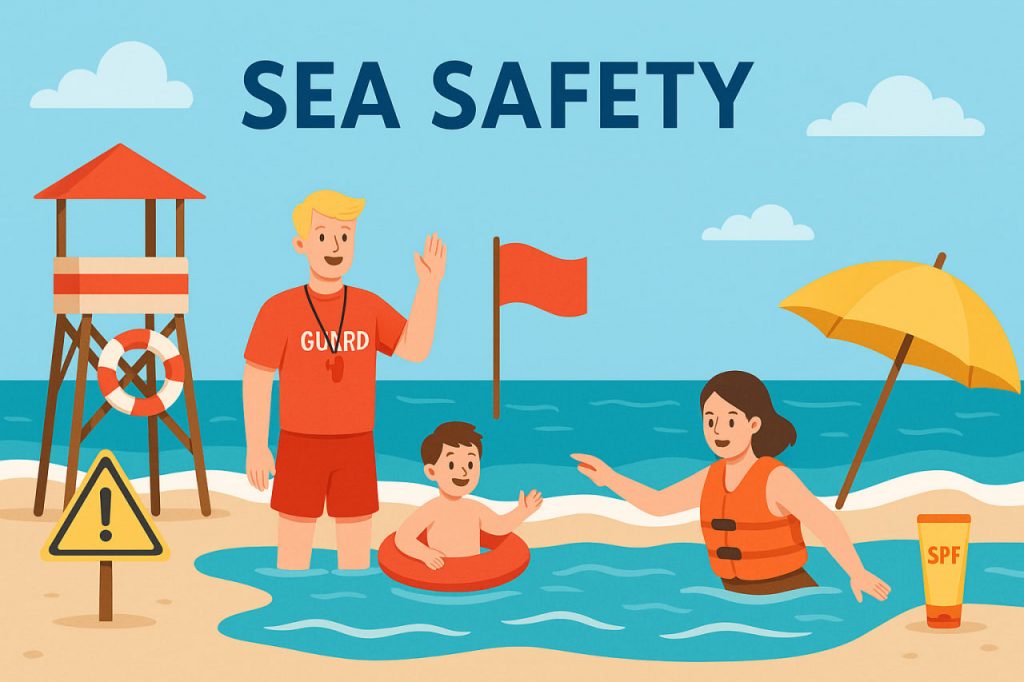The sea offers fun, beauty, and relaxation—but it also carries risks. Whether you’re swimming, boating, or just walking along the shore, understanding basic sea safety rules is essential for protecting yourself and others. The ocean is powerful and unpredictable, so respecting its forces can prevent accidents and save lives.
Understanding Sea Hazards
There are several common dangers people may encounter at the beach or in the sea:
- Strong currents, including rip currents, can pull swimmers far from shore.
- Waves may appear small but can knock people over or cause injuries.
- Marine animals, like jellyfish or sea urchins, can sting or cut.
- Sharp rocks, coral, or broken glass can cause foot injuries.
- Sun exposure leads to sunburn or heatstroke if not managed carefully.
- Boats and jet skis in busy areas pose collision risks.
Knowing what to expect helps you avoid getting caught off guard.
Before Entering the Water
Preparation is key to a safe ocean experience:
- Check weather and tide forecasts—bad conditions can make swimming or boating dangerous.
- Only swim in designated areas, ideally with lifeguards present.
- Observe safety flags or warning signs posted on the beach.
- Apply sunscreen to prevent burns, and wear UV-protective clothing.
- Hydrate well, especially on hot days.
Don’t enter the water if you feel tired, sick, or under the influence of alcohol.
Rules for Safe Swimming
To reduce risk while in the water:
- Never swim alone—always have a buddy.
- Stay within sight of a lifeguard if possible.
- Don’t dive headfirst into unknown waters—there may be rocks or shallow areas.
- Learn how to float calmly if caught in a rip current—don’t panic or fight it.
- Teach children basic water safety and watch them constantly near water.
- Use flotation devices cautiously—they’re helpful, but not foolproof.
If you’re not a strong swimmer, stay in shallow areas and wear a life jacket.
Boating and Water Sports Safety
If you’re kayaking, sailing, or riding a jet ski:
- Wear a life vest at all times.
- Let someone know your route and return time.
- Carry communication tools, like a waterproof phone or radio.
- Avoid going out during storms, high winds, or fog.
- Stay a safe distance from swimmers and other watercraft.
Always follow local laws and guidelines for operating water equipment.
Emergency Tips
If someone is in trouble:
- Alert a lifeguard immediately or call emergency services.
- Throw them a floatation aid, but avoid jumping in unless you’re trained.
- If you’re caught in a rip current, swim parallel to the shore until free, then return calmly.
Knowing these steps can turn you into a lifesaver, not a second victim.
Glossary
- Rip current – A strong, narrow current moving away from the shore
- Hydrate – To drink enough water to stay healthy
- Lifeguard – A trained person who monitors and rescues swimmers
- Flotation device – Equipment like a life jacket that helps keep you afloat
- UV protection – Defense against ultraviolet rays from the sun


